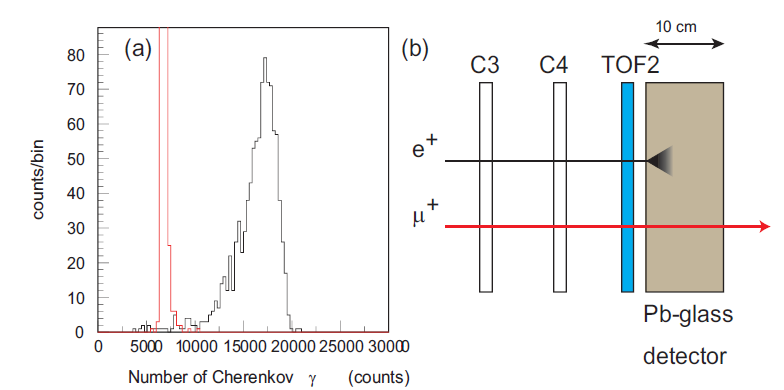Lead glass counter
A lead-glass Cherenkov detector (PGC) with 10 cm thickness will be put just behind the TOF2 counter in each gap as the third PID element for e+ μ+ separation. The properties of the PGC system are summarized in Table 2. By combining this PGC with the AC counter and the TOF system, we can identify e+ with very high precision. We plan to reuse the lead-glass blocks which were used in the TOPAZ electron- positron collider experiment at KEK TRISTAN c). The Block has a size of 300 mm in length, 122 by 113 mm at the front, and 122 by 135 mm at the back, and the lead-glass material is SF6W.
(a) Cherenkov photon yields generated by e+ and μ+ hits in the 10 cm Pb-glass material by a Monte Carlo simulation and (b) schematic view of the new PGC detector system. A Pb-glass Cherenkov material of 10 cm in thickness will be placed behind the TOF2 counter. The black and red histograms in (a) correspond to e+ and μ+ signals, respectively.